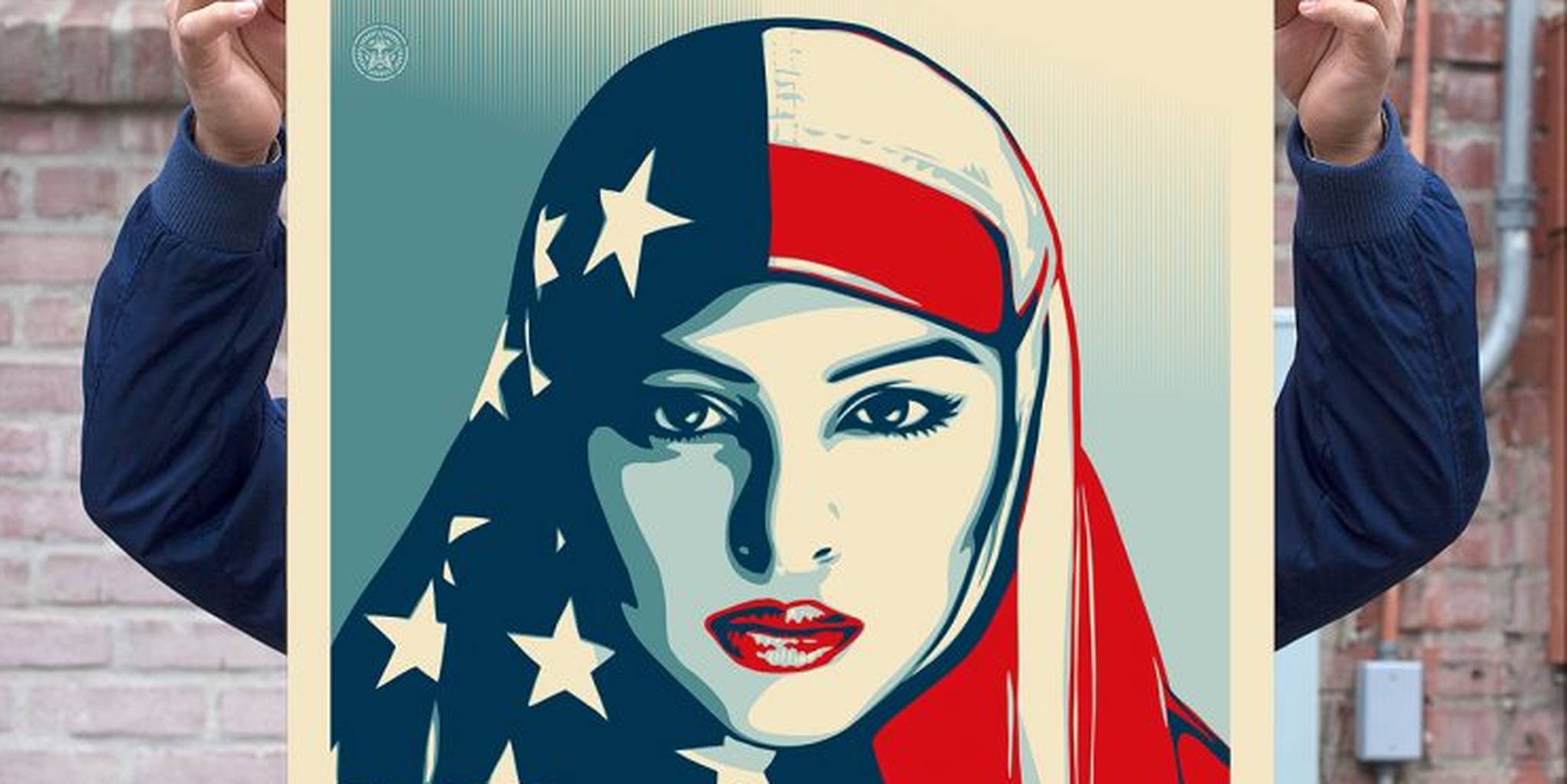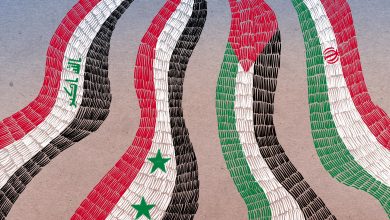Be Mindful of Your Rhetoric Regarding Islam and the #MuslimBan

Photo via Shepard Fairey/Kickstarter
On Jan. 27, 2017, President Donald Trump signed an executive order that immediately and effectively banned non-U.S. citizens from seven Muslim-majority countries from entering the country. These countries are Iran, Iraq, Libya, Somalia, Sudan, Syria, and Yemen. Overnight, the news was (and still is) filled with harrowing stories of immigrants and refugees from these countries, with or without visas and green cards, being detained at airports and forced back to their homelands. There have been countless viral articles, videos, and interviews centering on families broken apart, opportunities squandered, and hate being spread throughout the world due to this order.
But there have also been cracks of light through the dark. Lawyers took time to come to airports in an effort to fight for countless travelers. So many people donated to the A.C.L.U. (American Civil Liberties Union) that their lawyers were able to successfully oppose the executive order in New York, temporarily granting visa holders the ability to come back into the country. Judges from five other states quickly followed suit. Protests emerged in airports from LAX to JFK. People shared their own immigrant stories through the Twitter hashtag #NoBanNoWall. Essentially, well-intentioned populations came together and refused to allow a fascist regime to think the ban would happen – at least not without a fight.
As a second-generation Iranian-American, the daughter of two Iranian immigrants (who came here on student visas in the 70’s and have since been granted the privilege of citizenship), it has been bittersweet to see the masses fight for these Muslim countries. It has been sweet for obvious reasons, but bitter because one large argument against the ban has gone without critique.
On social media and within multiple publications, maps and graphs have circulated to prove that the immigrants and refugees from the countries that are banned have killed exactly zero U.S. citizens on U.S. soil in the last 40+ years. Yet in those very same images, large numbers stand beside other Muslim countries such as Lebanon, Saudi Arabia, and the United Arab Emirates.
Why is this a problem? In short, because it heavily implies that a ban is okay, as long as it targets the right countries. In the same breath, it says Islam is a hateful religion – just not in those countries. In the same argument, it perpetuates the very thing that must be dismantled in these discussions: Islamophobia.
We should not be saying, “You’ve got the wrong countries.” We should be saying, “Islam is not synonymous with terrorists and extremists.”
It must be noted that many people have shared these graphs after the realization that Trump’s businesses extend overseas to countries such as Lebanon, Saudi Arabia, and the United Arab Emirates. The question became: If he and his administration are so racist, so Islamophobic, and/or so deluded that they assume this hateful and targeted order is the way to fight terrorists, then why exclude the countries that have, historically, had a tie with problematized, stereotypical terrorists? The answer: to save his businesses above all else.
This is something important to note; it absolutely cannot go without critique. Yet when people share these images with the intent to show Trump’s corruption, but do so without proper analysis of their information, they do more harm than good. If the intent is to show his corruption, to adequately do that, one must also attack his blatant Islamophobia as well. It is imperative to point out the corruption as well as the hate. As allies, we must hold him accountable for all his flaws, just as we should hold one another accountable for our flaws or ignorance when fighting such injustices.
I myself wanted to critique the rhetoric, because I’ve seen it in the Iranian-American community as well. And this rhetoric within the community comes from a complex place that non-Iranians may not understand. When one country that historically had an imperial hand in your economy and government spends the last three decades calling your homeland – and by extension you, your family and friends, and your religion – something it is not, it is a gut reaction to point the finger and deflect. But as complex as it is, it’s not an excuse.
We must go beyond gut reactions. To effectively dismantle the hate and slander against Iran, we must deconstruct Islamophobia. As long as Iran has a Muslim-majority population and Islamophobia continues to be tolerated, it will always be a target.
Furthermore, in Euro-America (to be more exact: the United States, Canada, and Europe), it is crucial to deconstruct the enforced image of a terrorist rather than simply add to it. On top of these problematic maps and graphs of the Middle East, supposed allies have continued to push that U.S. citizens and/or white men with racialized agendas against racial minorities in Euro-America are also terrorists. In understanding the term terrorism, this is absolutely correct. They are not “lone wolves” or exclusive outsiders to society dealing with mental health issues; they are terrorists. Still, by not targeting the fact that the Trump administration (and administrations before his own) have attached terrorism to people of color specifically, this rhetoric does nothing. It expands what a terrorist can be, rather than pushes Euro-America to think critically about their misplaced and outright wrong ideas of Islam.
So be mindful of your rhetoric when discussing the Muslim Ban. No matter what your homeland or host land, think carefully about what a seemingly righteous slogan, map, or point says between the lines. To summarize: fight the ban and other forms of oppression against the Muslim community by naming and fighting Islamophobia, first and foremost.




